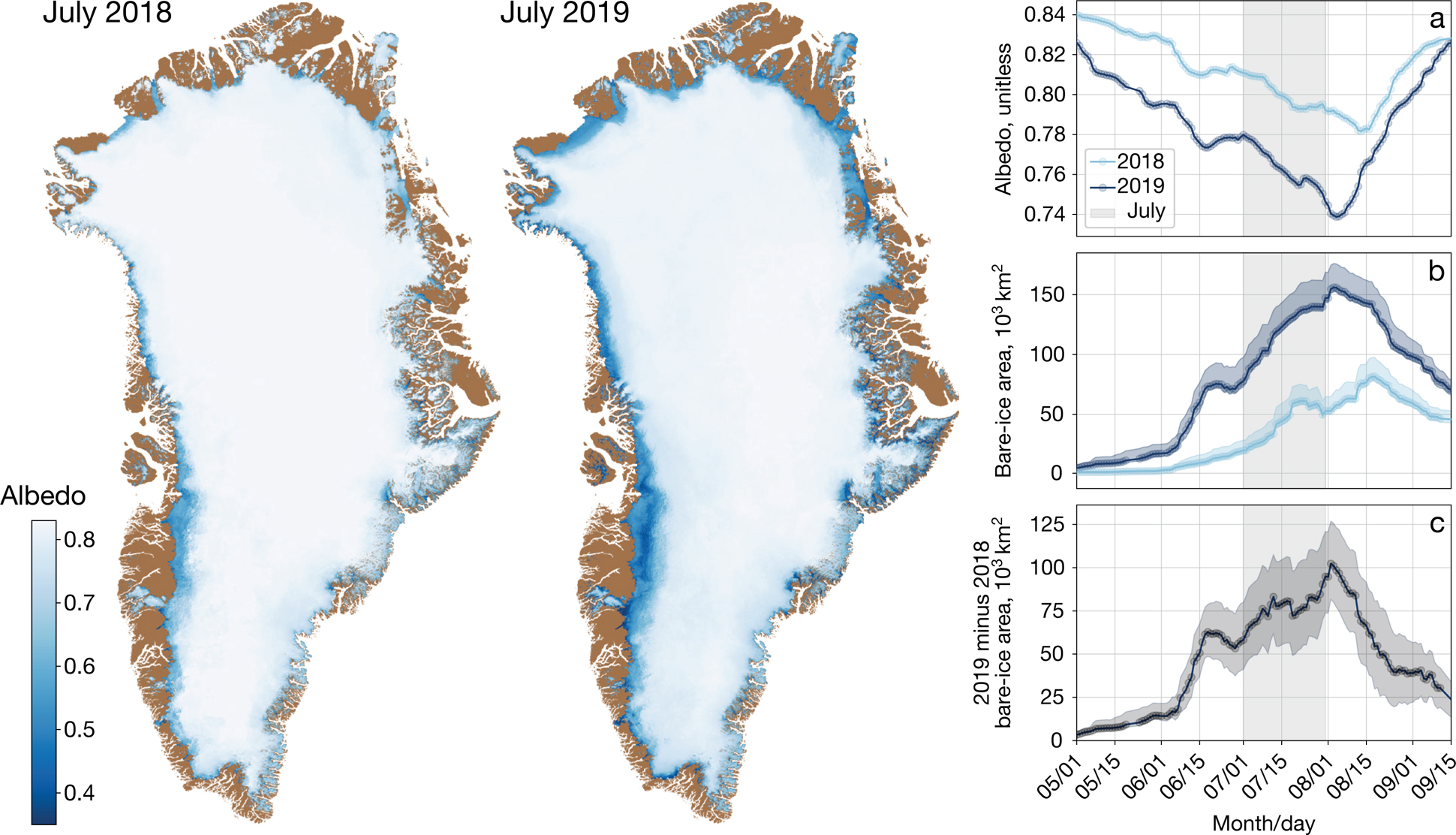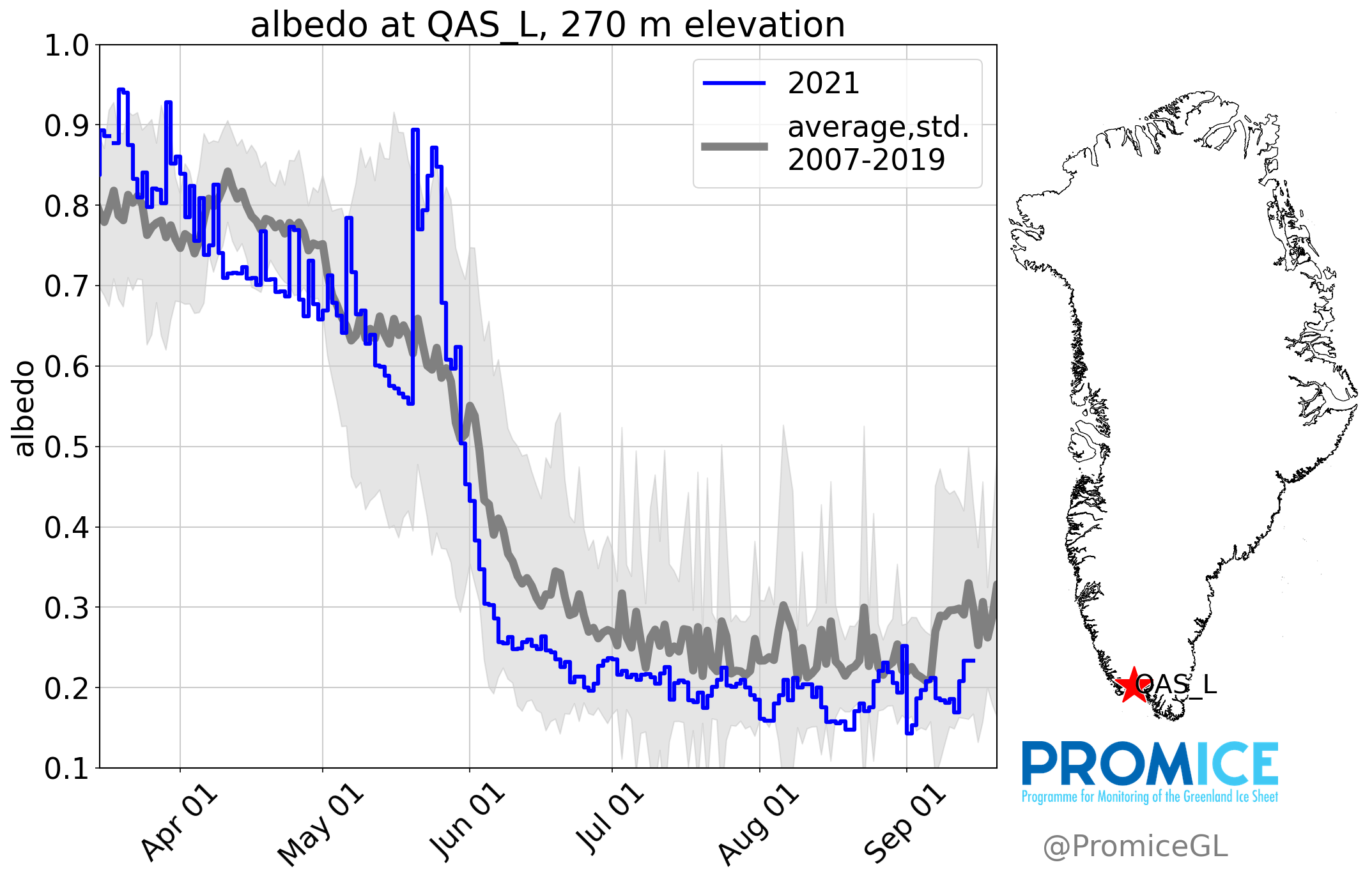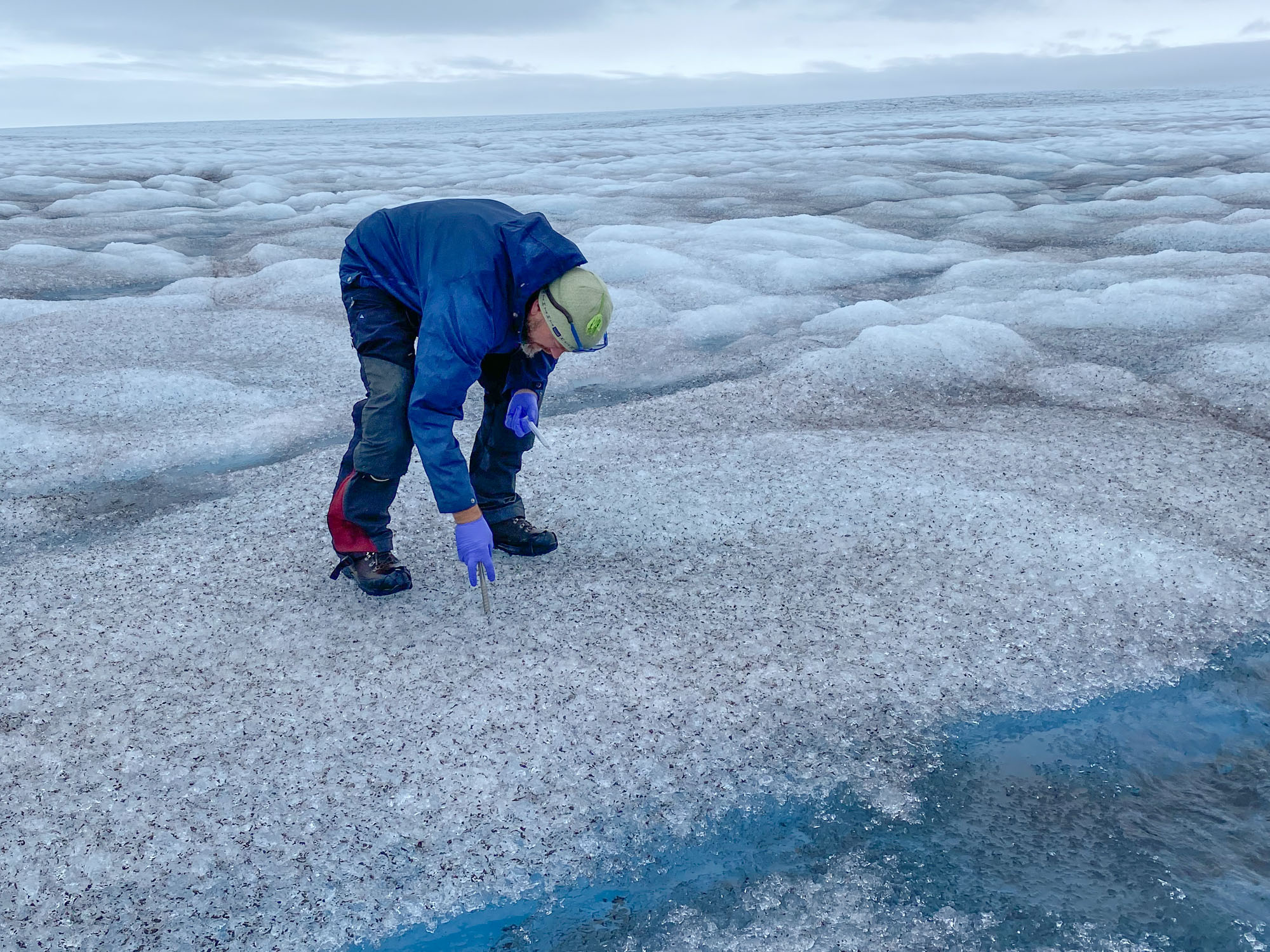Journal announces PROMICE paper as ‘most read’ in 2021
The scientific journal GEUS Bulletin just announced the most popular publications of 2021 and a paper with three PROMICE researchers are at the top.
A scientific paper with authors from the PROMICE team just made the top of ‘2021 most read and downloaded’ publications in the scientific journal GEUS Bulletin.
The publication ‘Greenland bare-ice albedo from PROMICE automatic weather station measurements and Sentinel-3 satellite observations’ features an overview of changing bare-ice area of Greenland and the snow and ice darkness in two extreme years of 2018 and 2019.
From publication in April 2021, the paper was downloaded 936 times and had 1,398 abstract views. Which is several hundred downloads ahead of second place Svennevig et al. with ‘Preliminary landslide mapping in Denmark indicates an underestimated geohazard’.
Editor congratulates researchers
GEUS Bulletin editor in chief Catherine Jex congratulates the researchers saying: “The number of downloads achieved by this paper is super for a journal like GEUS Bulletin.” She adds that the visibility achieved by all the top papers sets a new high standard for the journal, which has undergone numerous upgrades.
One of the authors of the top ranking paper, Professor Jason Box from The Geological Survey of Denmark and Greenland (GEUS) department of Glaciology and Climate and part of the PROMICE research team thinks the popularity stems from specific factors that support one another.
“The article was popular because for one: the changes to the bare ice area of Greenland is not widely reported but is where most melting happens. Another second factor is, this was the first study featuring Greenland-wide bare ice area results from a new EU satellite mission (Sentinel-3). A third factor is how the PROMICE network is reaching a level of maturity, now with 15 years of data, that we can make more definitive statements as to what is really happening to the ice”
As described in the abstract, the researchers used “105 PROMICE ice-melt time series to identify the timing of seasonal bare-ice onset preceded by snow cover conditions.” The result was applied to “snow-to-ice albedo transition value to measure the variations in daily Greenland bare-ice area in Sentinel-3 optical satellite imagery covering the extremely low and high respective melt years of 2018 and 2019.”

Monthly averaged Greenland snow and ice albedo from Sentinel-3 OLCI data in July 2018 and 2019. Inset figures: Time series of Greenland ice-sheet albedo and bare-ice area over 2018 and 2019 melt seasons (1 May and 15 September). Wehrlé et al. 2021, GEUS Bulletin
Authors, Wehrlé et al:
- Adrien Wehrlé Geological Survey of Denmark and Greenland (GEUS), Copenhagen, Denmark
- Jason E. Box Geological Survey of Denmark and Greenland (GEUS), Copenhagen, Denmark
- Masashi Niwano Meteorological Research Institute, Japan Meteorological Agency, Tsukuba, Japan
- Alexandre M. Anesio Department of Environmental Science, Aarhus University, Roskilde, Denmark
- Robert S. Fausto Geological Survey of Denmark and Greenland (GEUS), Copenhagen, Denmark

